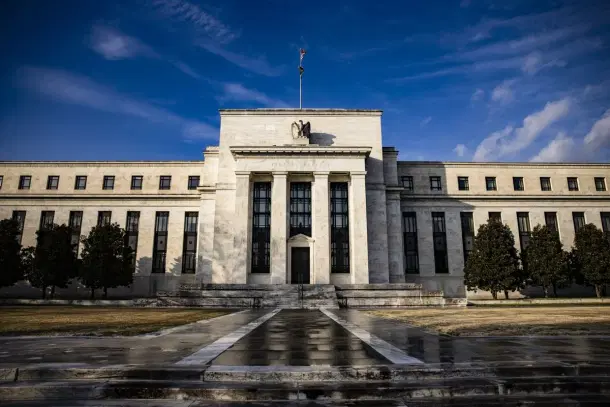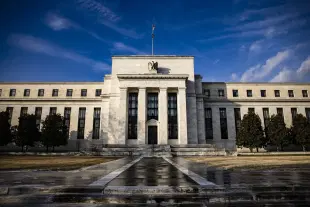Economy
Explained In Brief: Fed Will Be Hiking Rates Again This Wednesday, So, How Exactly Does The Fed Hike Rates?
Swarajya Staff
May 02, 2022, 06:41 PM | Updated May 03, 2022, 11:06 AM IST
Save & read from anywhere!
Bookmark stories for easy access on any device or the Swarajya app.


The US Federal Reserve is expected to hike interest rates this Wednesday, in an attempt to control inflation, which has risen to a level the world hasn’t witnessed in decades.
The Fed’s main job is setting the price of borrowing money, although for some odd reason, these days Fed and central banks around the world seem to be more interested in things which have the allure of being much more ‘meaningful’. Sarah Bloom Raskin, Biden's erstwhile pick for filling the post of Fed's vice chair, kept arguing that the Fed should play an 'active role in climate policy'.
Bit odd that after fumbling so starkly and driving us to a position where we have to seriously consider the possibility (albeit low) of a stagflation in America, some policymakers like her think that the Fed should take on additional responsibilities. Curiously, the institutions seeking wider influence are always the ones who fail in fulfilling their basic mandates.
Be that as it may, Fed’s primary job remains setting borrowing costs. Lower rates incentivises spending, which in turn fuels economic growth. Higher interest rates curtail demand, incentivise saving, theoretically flushing out extra money from the financial system.
The former helps economy rejuvenate from recessions and the later prevents excessive inflation and asset bubbles.
This policy decision has significant ramifications, not just for the American economy but the world economy. You can read this article, published few weeks ago to read about how the Fed flummoxed, its challenges and the implications of rate hike on other countries, especially the impact on capital flows.
Today, we take a short glimpse at the mechanisms of how the Fed actually hikes interest rates. Obviously, Jerome Powell, The Fed Chair, doesn’t take out his wand and swivel it whilst sauntering into your bank, like a scene out of a JK Rowling novel. Neither do Fed officials take out their phones and contact every lender in America to set the borrowing costs.
So What Exactly Happens?
The Fed adjusts something called the federal funds rate. This is the average interest rate that banks pay each other for overnight loans.
What does that mean in the real world? Well, commercial banks lend and borrow money from each other. This is done for various reasons, the primary one being to ensure that they meet the liquidity requirements which. Have been set by regulators. A bank with excess cash on hand, can loan that cash to another bank if the other bank needs it.
When cost of borrowing between banks is raised, the Fed, indirectly raises borrowing costs across all sectors of economy, because these higher rates filter down to businesses and consumers.
It is also worth mentioning that the Fed doesn’t pick a specific number for federal funds rate. Instead, they pick a range. Last month when the Fed raised interest rates to curtail inflation, it raised its target range from 0-25 basis points to 25-50 basis points (0.25-0.5 per cent). The banks typically aim for the midpoint of Fed’s range, although there is always some fluctuation.
Some history: The federal fund rates dropped to 0-0.25 per cent only two times in history. Once during the aftermath of the Great Recession and once during the pandemic we all witnessed. If you remember, the Fed is currently raising interest rates to control inflation, which is at its highest since early 1980s. During the early 1980s, the Fed’s federal fund rate had to be spiked to an extraordinary level to curtail inflation. In those days it soared to a target range as high as 19-20 per cent.
Expect the Fed to raise rates more aggressively in the coming next few months. Front loading, if you will. After these few months, most probably after June, Fed will slow its rate hikes.





